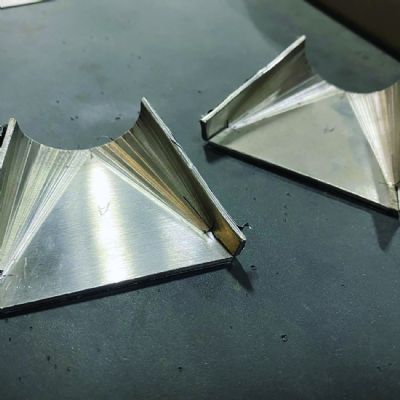Our office is seeing a steep rise in willful citation allegations in machine guarding, training, lockout/tagout, and in accident investigations. OSHA is assessing penalties as high as $70,000 per similar machine cited. At the same time, OSHA investigators are holding private interviews with supervisors, maintenance foremen, construction site leadpersons and mangers. Videotaped interviews of employees are becoming more common, as are multiple subpoenas for documents such as reports from safety consultants, insurance risk loss auditors, ISO 9000 auditors and workers compensation files.
Employees and employers have legal rights to have a representative present during interviews. More and more are exercising that right, to avoid unfair interviews and leading questions or potential misrepresentations.
Interview techniques that seem to be popular include comparing answers of workers from different shifts, requests for the worker to sign the inspector’s interview notes, and followup interviews.
Notable features of the enhanced penalty and enforcement program on recalcitrant employers include:
• Mandatory OSHA follow-up inspections.
• Inspection of other worksites in different states owned or operated by the same targeted employer.
• Five-year “look back” for repeat citations.
• High-gravity “serious” violations related to the standards identified in the SVEP as targets can be cited instance-by-instance as individual (not grouped) citations.
• Creation of a nationwide referral procedure for OSHA regions and state plan states.
• Targeting of high-emphasis hazards for inspection, such as fall hazards, exposure to hazardous chemicals, LO/TO and 1910.212 general machine guarding amputation hazards.
What are OSHA’s criteria for any inspection or employer to be included under this new severe violator enforcement program? Here’s OSHA’s list:
Any inspection that meets one or more of criteria A through D, at the time that the citations are issued, will be considered a severe violator enforcement case. Willful and repeated citations and failure-to-abate notices must be based on serious violations, except for recordkeeping, which must be egregious (e.g., per-instance citations). See FOM, CPL 02-00-148, Chapter 6, paragraphs V.A.1. and VI.A.1.
A) Fatality/Catastrophe Criterion—A fatality/catastrophe inspection in which OSHA finds one or more willful or repeated violations or failure-to-abate notices based on a serious violation related to a death of an employee or three or more hospitalizations.
Note: The violations under this criterion do not have to be high-emphasis hazards as defined in Section XII, (p.5).
B) Non-Fatality/Catastrophe Criterion Related to High-Emphasis Hazards—An inspection in which OSHA finds two or more willful or repeated violations or failure-to-abate notices (or any combination of these violations/ notices), based on high gravity serious violations related to a high-emphasis hazard as defined in Section XII, (p. 5).
C) Non-Fatality/Catastrophe Criterion for Hazards Due to the Potential Release of a Highly Hazardous Chemical (Process Safety Management)—An inspection in which OSHA finds three or more willful or repeated violations or failure-to-abate notices (or any combination of these violations/notices), based on high gravity serious violations related to hazards due to the potential release of a highly hazardous chemical, as defined in the PSM standard.
D) Egregious Criterion—All egregious (e.g., per-instance citations) enforcement actions will be considered SVEP cases.
And, what does OSHA plan to require in settlement agreements to settle SVEP citations? Here is its list of demands:
E) Enhanced Settlement Provisions—The following settlement provisions shall be considered to ensure future compliance both at the cited facility and at other related facilities of the employer:
1) Employers shall hire a qualified safety and health consultant to develop and implement an effective and comprehensive safety and health program or, where appropriate, a program to ensure full compliance with the subpart under which the employer was cited under the SVEP;
Note: Employers cannot be required in a settlement agreement to use OSHA’s state consultation services; such services are strictly voluntary.
2) Applying the agreement company-wide (See CPL 02-00-090 Guidelines for Administration of Corporate-wide Settlement Agreements. June 3, 1991);
Note: Company-wide settlement agreements are to be coordinated with the National Office of the Solicitor.
3) Requiring interim abatement controls if OSHA is convinced that final abatement cannot be accomplished in a short period of time;
4) In construction (and, where appropriate, in general industry), using settlement agreements to obtain from the employer a list of its current jobsites, or future jobsites within a specified time period. The employer should be required to indicate to OSHA the specific protective measure to be used for each current or future jobsite;
5) Requiring the employer for a specified time period to submit to the area director its log of work-related injuries andillnesses on a quarterly basis, and to consent to OSHA conducting an inspection based on the information;
6) Requiring the employer for a specified time period to notify the area office of any serious injury or illness requiring medical attention and to consent to an inspection; and
7) Obtaining employer consent to entry of a court enforcement order under Section 11(b) of the Act.
F) Federal Court Enforcement under Section 11(b) of the OSH Act—SVEP cases should be strongly considered for section 11(b) orders when it appears that such orders may be needed to assure compliance. An employer’s obligation to abate a cited violation arises when there is a final order of the Review Commission affirming the citation. For guidance on drafting citations and settlement agreements that can maximize the deterrent effect of a Section 11(b) order, see FOM (CPL 02-00-148) Chapter 15, section XIV. MF Technologies: Bending
 Douglas Ehlke
Douglas Ehlke








